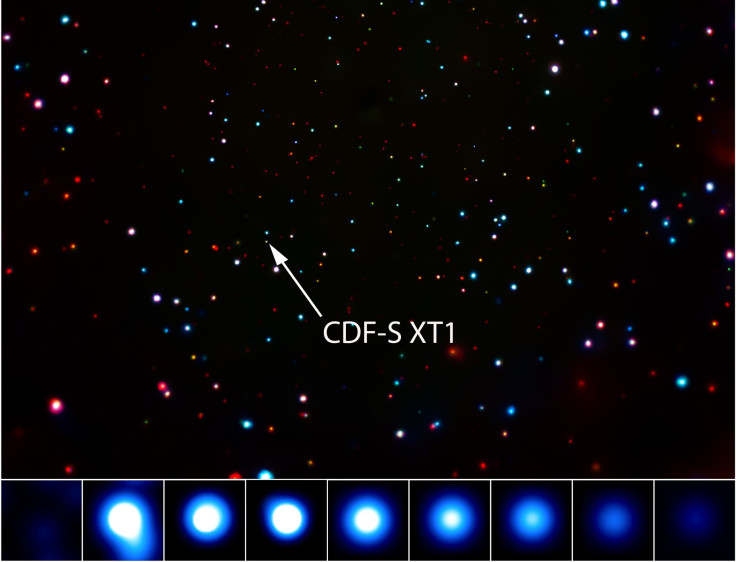A Distant Galaxy Belched Out A Powerful Burst Of X-Rays And Astronomers Don't Know Why

Nearly 10.7 billion light-years from Earth lies a faint galaxy whose weird behavior has left astronomers baffled.
For about a day in October 2014, something within this galaxy erupted brightly in X-rays, becoming a 1,000 times brighter in a span of a few hours. Then, quite mysteriously, it faded completely, falling below the sensitivity NASA’s Chandra X-ray Observatory is capable of detecting.
“Ever since discovering this source, we’ve been struggling to understand its origin,” Franz Bauer from the Pontifical Catholic University of Chile who co-authored a study detailing the observations, said in a statement released Friday. “It’s like we have a jigsaw puzzle but we don’t have all of the pieces.”
The mysterious source was not visible at any other time the observatory monitored the region for, and no similar events were detected in other parts of the sky.
This is not the first time astronomers have detected mysterious cosmic objects belching out X-ray flares. In October, the Chandra X-ray Observatory and the European Space Agency’s XMM-Newton Observatory spotted two objects expelling massive X-ray flares, which became about a hundred times brighter in less than a minute, before returning to original X-ray levels after about an hour.
What makes this detection unique is that it displays different properties from the as-of-yet unexplained variable X-ray sources described above.
“We may have observed a completely new type of cataclysmic event,” study co-author Kevin Schawinski from ETH Zurich in Switzerland, said in the statement. “Whatever it is, a lot more observations are needed to work out what we’re seeing.”
The researchers do have a few theories and two of these invoke gamma-ray burst (GRB) events, which are explosions triggered either by the collapse of a massive star or by the merger of a neutron star with another neutron star or a black hole. A third possibility is that a medium-sized black hole may have shredded a white dwarf star.
“None of these ideas fits the data perfectly but then again, we’ve rarely if ever seen any of the proposed possibilities in actual data, so we don’t understand them well at all,” co-author Ezequiel Treister, also from the Pontifical Catholic University, said in the statement.
© Copyright IBTimes 2025. All rights reserved.






















